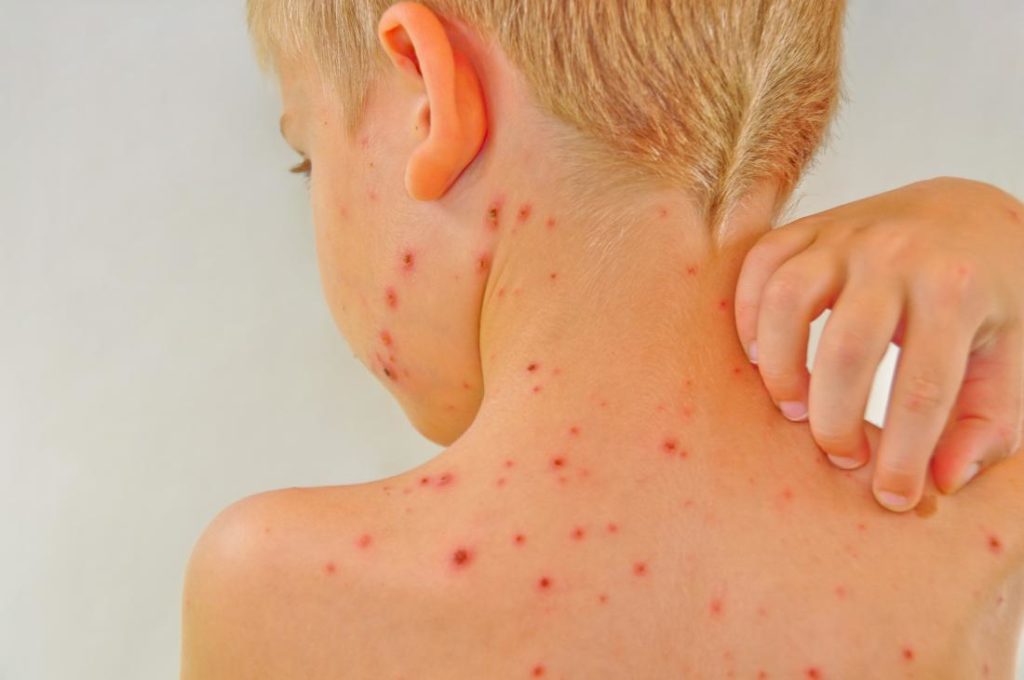CHICKEN POX

What is chicken pox and what does it look like?
Chicken pox is a highly contagious infection caused by the varicella-zoster virus (VZV). It may also be called Varicella. Chicken pox is characterized by successive crops of itchy vesicles (dew drop blisters), that evolve to pustules (pimple-like), crusts and occasionally scars. These lesions are often accompanied by fever, headache, aches and fatigue, although this is more common in adults. VZV can affect children and adults and since the introduction of the varicella vaccine in 1995 there has been a decrease in varicella infections. In vaccinated children chickenpox illness is typically milder, producing no symptoms other than a few red bumps. In unvaccinated children the illness begins with the appearance of lesions that may resemble “dew drops on a rose petal” or small water droplets on a red surface. The vesicles then go through life cycle, progressing to pustules and crusts over an 8-12 hour period. Lesions first appear on the face and scalp, and spread downward towards the trunk and extremities. Lesions may also be seen on the palate in the mouth. Diagnosis of chicken pox is usually made on clinical findings alone.
What causes chicken pox and how is it spread?
Chicken pox is caused by the VZV virus and it is spread by contact or respiratory droplets (cough). The virus incubates for about 2 weeks and the lesions appear within 2-3 days of exposure.
How is chicken pox treated?
The course of chicken pox is self-limited in healthy children and usually lasts 5-10 days. Chicken pox is treated symptomatically with anti-itching lotions and oral antihistamines. Antiviral agents can be given within 24 hours of onset of disease and may decrease severity in otherwise healthy patients. Antibiotics may be required if a secondary bacterial infection occurs in the open lesions.
References:
Wolff K, Johnson, RA. Fitzpatrick’s Color Atlas and Synopsis of Clinical Dermatology. Sixth Edition. 2009.


